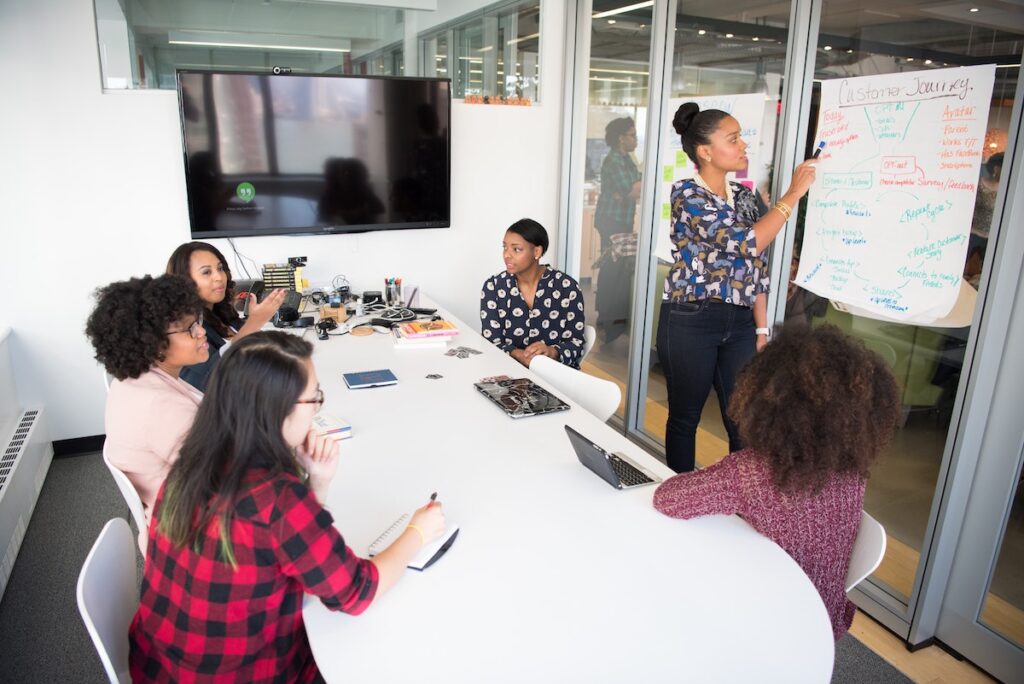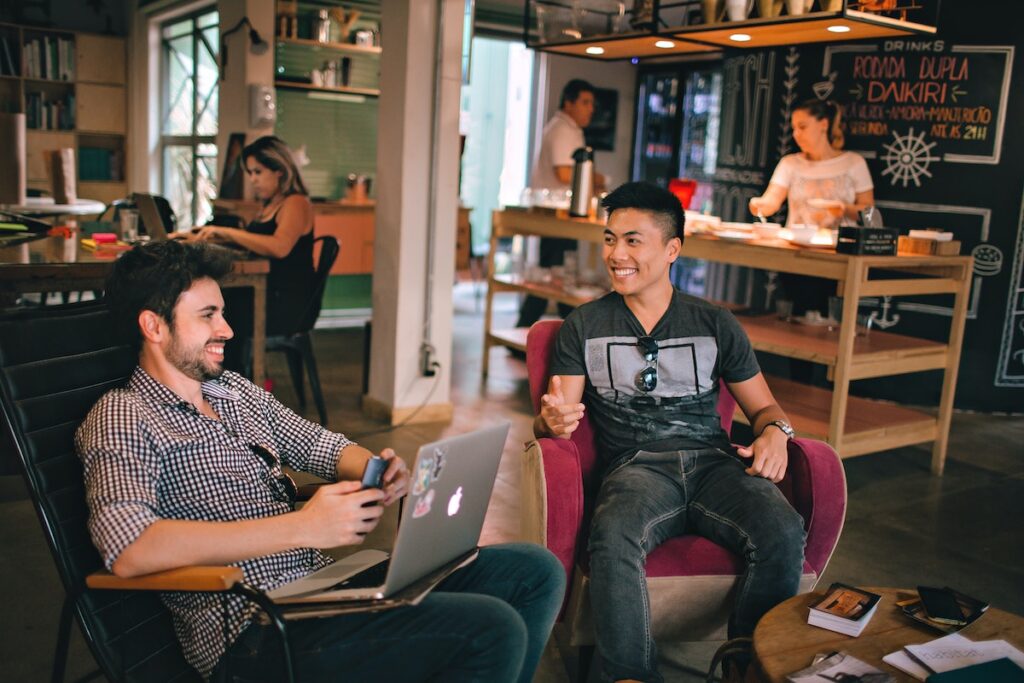Something that has become clear is that the purpose of the office space will not go back to how it was pre-COVID: 40-hour workweeks in the office with little variety and mostly a lot of work. The 9 to 5 mentality in the office, where the office really served as a fixed base from which to work, will not return. On the contrary: the office space will serve as a kind of social hub, a meeting place.
A positive development, according to Hidde de Vries of The Recharge Company: “Quite honestly, in that respect COVID-19 and working from home is also very positive. It has provided new insights and the taboo on working from home has largely disappeared.”
The new office

Since the outbreak of the corona pandemic, there have been predictions about the purpose of the office space and which changes the employees will experience in that. Working from home will continue to exist to a large extent, causing a shift of purpose within the office space.
The predictions are that the office will take on a social charge, become a place where colleagues go to see each other and interact. A creative hub, where employees brainstorm, hold creative sessions, and most importantly do activities together to maintain their social network with each other.
Home will become the place where they can work focused when they want to isolate themselves, an undisturbed place. Something that makes it even more important to make the office a recharging point of sorts. It is important to make sure that employees also spend time without phones and laptops so that they can return to work recharged afterward.
A quick walk around the block or, in other words, a day to blow off steam and do fun things at the office. Robert Meirmans of OneFit agrees: “Employees should be given the space from their employer to do something different, especially now in the home office climate.”
This means that those spaces in the office will no longer be needed: the layout of office buildings and spaces will therefore change.
How is that going to look?

Offices will be designed to meet the needs of employees, with a central point being the creation of a meeting place. A place where there is room for activities together. Think of brainstorm sessions, creative get-togethers, sports classes, and things like lunches and drinks. Fewer workstations with monitors, more sitting areas, and opportunities to just not ‘work’ together.
It will also require less office space, for example, as the emphasis continues to be on working from home. There will be fewer people coming to the office at the same time, who will not have to spend 8 hours a day behind a monitor. So in this way, companies can start scaling down office space, something that, for example, also benefits costs and financially makes room for other opportunities.
Fewer employees going to the office per day, fewer days filled with working people in the space, and more togetherness. So a full office with only workstations becomes unnecessary. It is important to look at what employees need once they return to the office. Conviviality, activities, and spaces that are adapted accordingly.
A kind of ‘club house’

As an employer, therefore, also look at the new way of working together and what employees need for this. Organize activities that they do when they are in the office, increase productivity by responding to needs and ensure that the transition from working at home to working partly at the office goes smoothly.
Great importance is placed on the feeling the employee has once in the office. Predictions indicate that the needs are for a clubhouse feeling, togetherness and a large social aspect. Around this, therefore, activities can be planned, spaces allocated that cater to this.
In addition, external services can offer a way out, such as OneFit for Business. Robert is enthusiastic about this: “It will be a place that gives you energy and where you go for energy, for good coffee, for those friendly colleagues. It will be a place to meet up, exercise together.”
With OneFit for Business, HR managers can ensure that activities take place in the office that bring employees together and also challenge them to stay fit. Think of challenges among themselves, sports classes on location (office for example) and also the aspect of exercising together with a membership. Offer employees a way to get together, where they can also stay vital and fit.
Stay fit, stay healthy.



